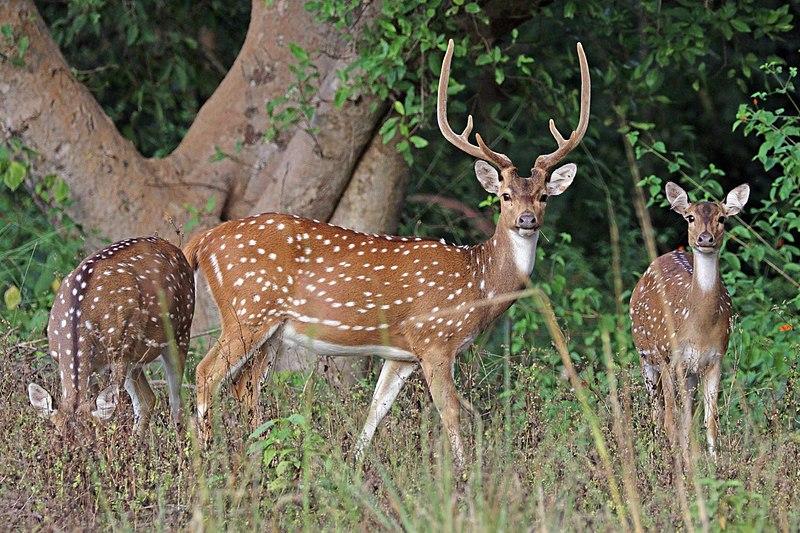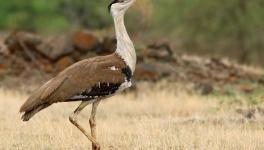Politics Rather Than Science Drives Conservation Today—Noted Forester

Kanha National Park, MP, India. Image Courtesy: Wikipedia
Manoj Mishra, who is also a founding member of the Yamuna Jiyo Abhiyaan, recently wrote Wildlife India@50, a book commemorating half a century of the Wildlife Protection Act (WPA), 1972. Mishra describes how this law helped prevent the decimation of wildlife populations, due to poaching in particular. He also explains why reviving the Great Indian Bustard will be “litmus test” of India’s ability to save its wildlife. Edited excerpts.
Why is the WPA significant? What was the status of wildlife protection before this act, and how did it help the situation?
Before the Wildlife Protection Act, it was a free-for-all, with states having their own laws on wildlife protection. Poaching was rampant, and it was the job of the police to arrest poachers. Members of the Indian Forest Service were not permitted to take action against poachers, who had a free run of our forests. The International Union for Conservation of Nature (IUCN) Assembly in New Delhi in 1969 and the Indian Board for Wildlife called for national-level legislation that could provide uniform laws for wildlife across the nation. This legislation not only set the nation’s agenda in wildlife protection but was a comprehensive legislation that other countries in the region later emulated.
Could you elaborate on the significant success stories in protecting wildlife during the last 50 years?
A number of success stories emerged from the WPA. The protection and revival of populations of mega-vertebrates, such as Project Tiger, Project Lion, Project Asian Elephant and Project One-horned Rhinoceros, are amongst the notable achievements. But there are other lesser-known successes, like the revival of the Barasingha in Madhya Pradesh, the Sangai deer in Manipur and the Hangul deer in Jammu and Kashmir. The WPA also saw the formation of key national parks, sanctuaries and community and conservation reserves.
There is a debate on whether wildlife needs inviolate spaces to survive. What is your view on sharing forest spaces between man and animals?
This question is difficult to answer. Many foresters and experts believe wildlife needs inviolate spaces, meaning the absence of human presence in the form of villages within protected areas like national parks and sanctuaries. Others think we need to revisit the definition of an ‘inviolate space’ and whether forest-dwelling tribes, fishermen in Marine National Parks, and others should be allowed to play a natural role in conservation. Juxtaposed against this is that our forest spaces are shrinking thanks to corporate takeover and mining activities. So in areas where the animal population has increased, we see [wild] animals spilling into villages adjacent to forests, as has happened with the Asiatic lions of the Gir forest, who have moved into neighbouring villages and taken to attacking cattle for food.
A recent controversy was regarding the introduction of cheetahs in the Kuno National Park in a place where wildlife experts had been pressing the government to relocate the Asiatic lion from their overcrowded Gir habitat. How did people removed from Kuno park for the lion react when the cheetah took its place?
In the present politically charged atmosphere, decisions are taken more on political merit than scientific facts. The Kuno National Park had been awaiting the Asiatic lions for over two decades. The villagers evacuated were told they were being asked to sacrifice to provide a second home for the lion, which they regard as the king of the forest. When the cheetah was finally brought there, they saw it as a great betrayal for the sacrifices they were asked to make. All this has happened despite a Supreme Court order asking that the lions be shifted there.
Some experts believe the most significant threat is the growing man-animal conflict. This is most apparent for elephants, whose numbers picked up after Project Elephant.
Forests are decreasing while the wild elephant population has risen, which is why elephants, to cite an example, are now making their way from Assam right up to Maharashtra via Chhattisgarh. With their increased numbers, we have to provide elephants with safer habitats. They are large animals who need plenty to eat. As wild elephants try to reclaim their previous habitats and migratory routes, it brings them into conflict with farmers and others. But I fear the rapidity with which forest land is being depleted will only serve to put the life of our animals at greater risk.
Conservationists also say efforts of several state governments to promote eco-tourism have not proved successful.
There is a major question mark on the whole concept of eco-tourism. Tour operators given licenses to operate around reserves and sanctuaries believe they should provide five-star facilities to tourists and allow them to sing, dance, and make as much noise as they wish. Nothing could be further from the truth. Wilderness tourism will remain ecologically harmful unless tourists are made to deeply respect the uniqueness and delicateness of forest ecosystems and leave a minimum impact, including on the people living there.
Smuggling of animal skins, rare animals and birds continues unabated. Our government has not been able to stop it. The global analysis places India amongst the top ten countries where airlines are used for trafficking prohibited wildlife products. Why is poaching increasing?
The smuggling of tradeable goods as a low-risk and high returns activity is age-old. Illegal trade in wildlife and its parts and products is an unfortunate fact that has adversely impacted our fast-dwindling biodiversity reserves. The Convention on International Trade in Endangered Species of Wild Fauna and Flora (CITES) in 1975 was a global response to this emergent threat. But despite best efforts, there is little respite on illegal trade in wildlife made worse by a “click of a button” online transactions, which are difficult to monitor.
Another failure has been our inability to protect our national bird, the Great Indian Bustard.
The sad fate of the Great Indian Bustard, whose numbers in the wild have plummeted alarmingly to just around 150, is the story of India losing one of its most critical ecosystems, namely natural grasslands. It will also prove a litmus test of our ability to save wildlife in our country. I believe that if we can save the Great Indian Bustard, we will prevent many of our other species, which are close to extinction, from going extinct. If we cannot save this bird, our other rare species will meet the same fate.
Why so?
If anything demonstrates how critical safe habitats can be for species survival, it is the story of the Great Indian Bustard. An endemic bird which once roamed in thousands across large parts of India is critically endangered today. When I was director of Madhav National Park, Shivpuri, in 1985, I remember sighting about 25-30 birds at a single glance in the then flourishing Great Indian Bustard sanctuary, Karera, in north-west Madhya Pradesh. Alas, we now find not a single bird there, and the sanctuary is under de-notification. Fast-paced infrastructure growth is proving a death knell for our wild spaces and wild species. The Great Indian Bustard habitats have to be secured. If the government had spent the money on re-introducing the cheetah to make transmission underground instead, it would have been a major step in saving this bird. The WPA is excellent legislation, but it is only as good as those implementing it. If there is no political will to implement a law, it will end up in the dustbin. We need politicians who have commitment and respect nature. Sadly, these, too, seem to have become a rare species.
The author is an independent journalist who has worked in several leading papers, including the Times of India, The Telegraph, The Independent and The Asian Age. The views are personal.
Get the latest reports & analysis with people's perspective on Protests, movements & deep analytical videos, discussions of the current affairs in your Telegram app. Subscribe to NewsClick's Telegram channel & get Real-Time updates on stories, as they get published on our website.
























